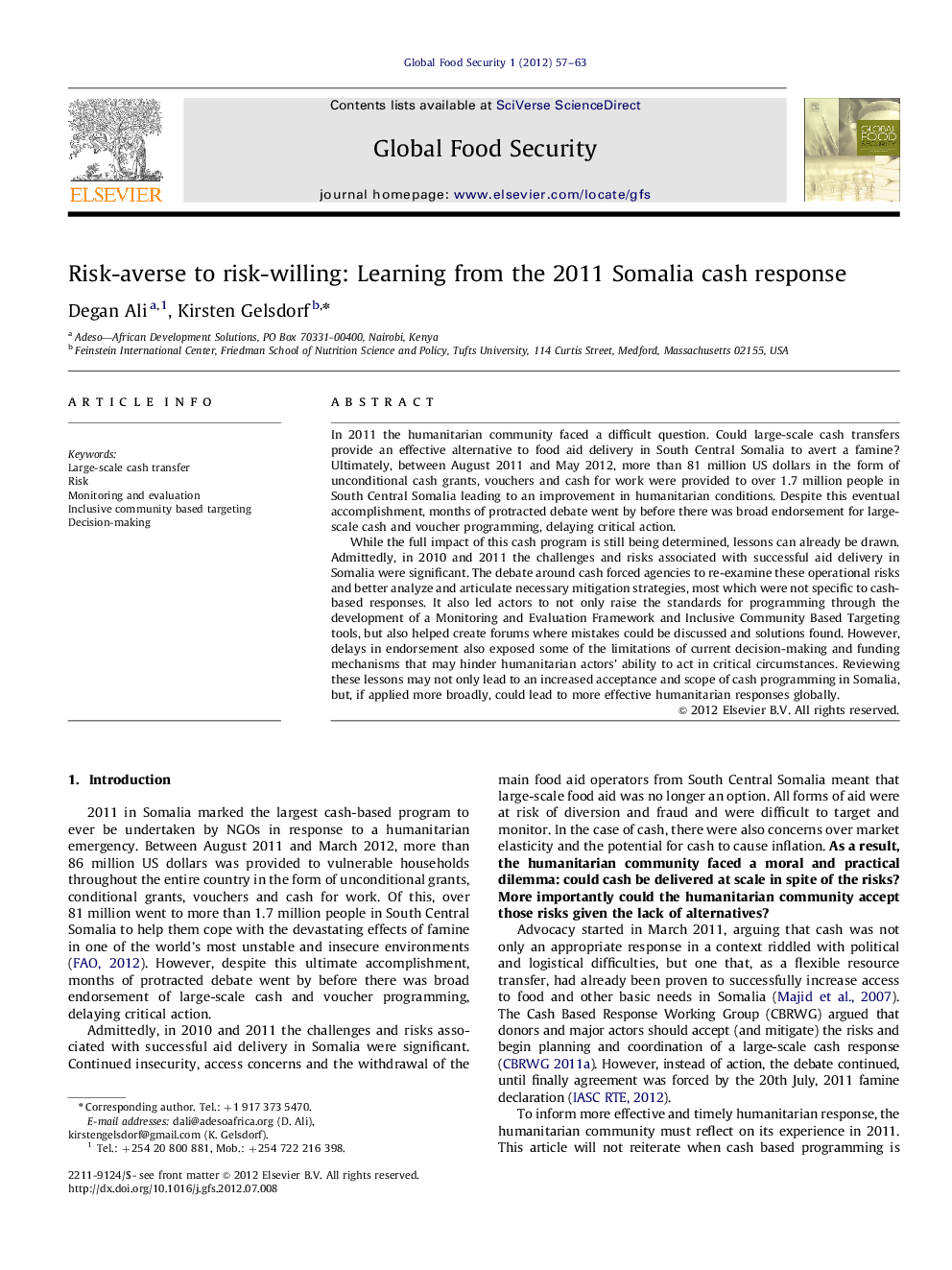| Article ID | Journal | Published Year | Pages | File Type |
|---|---|---|---|---|
| 1047623 | Global Food Security | 2012 | 7 Pages |
In 2011 the humanitarian community faced a difficult question. Could large-scale cash transfers provide an effective alternative to food aid delivery in South Central Somalia to avert a famine? Ultimately, between August 2011 and May 2012, more than 81 million US dollars in the form of unconditional cash grants, vouchers and cash for work were provided to over 1.7 million people in South Central Somalia leading to an improvement in humanitarian conditions. Despite this eventual accomplishment, months of protracted debate went by before there was broad endorsement for large-scale cash and voucher programming, delaying critical action.While the full impact of this cash program is still being determined, lessons can already be drawn. Admittedly, in 2010 and 2011 the challenges and risks associated with successful aid delivery in Somalia were significant. The debate around cash forced agencies to re-examine these operational risks and better analyze and articulate necessary mitigation strategies, most which were not specific to cash-based responses. It also led actors to not only raise the standards for programming through the development of a Monitoring and Evaluation Framework and Inclusive Community Based Targeting tools, but also helped create forums where mistakes could be discussed and solutions found. However, delays in endorsement also exposed some of the limitations of current decision-making and funding mechanisms that may hinder humanitarian actors' ability to act in critical circumstances. Reviewing these lessons may not only lead to an increased acceptance and scope of cash programming in Somalia, but, if applied more broadly, could lead to more effective humanitarian responses globally.
► We review the cash and vouchers response to the 2011 Somalia famine. ► Protracted debate on large-scale cash distribution delayed critical action. ► Cash and voucher programs can be done at scale in insecure environments. ► A shared approach to monitoring and evaluation is possible and improves learning. ► We need new approaches for humanitarian decision making and funding for cash at scale.
